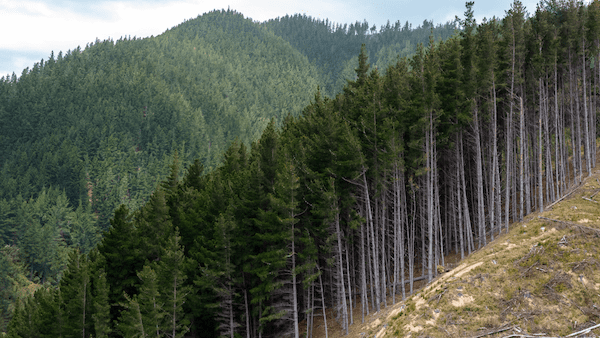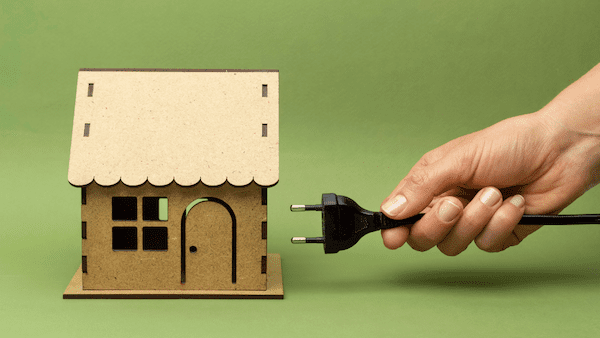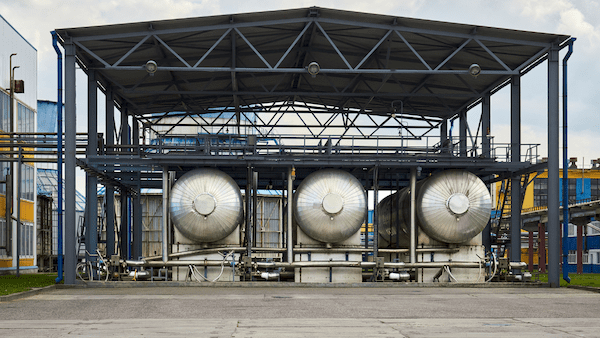New Zealand’s Second Emissions Reduction Plan could be pushing harder
New Zealand | 31 October 2024
This August, the New Zealand Government consulted on their proposed second Emissions Reduction Plan (ERP2), covering the period 2026 to 2030. This plan shows the thinking and approach of the new Government to New Zealand’s climate change challenge.
It is excellent to note that emissions in Aotearoa have fallen for the past three years. While this is in part due to COVID-related effects, it also appears to represent the Zero Carbon Act and climate-related policies starting to move into implementation. Here are some of our reflections on the draft ERP2.

FORESTRY
The first priority is how we treat forestry. The Government is proposing to take a ‘net-based approach’, which focuses on reducing emissions net of any removals or offsets, rather than a ‘gross emissions approach” that focuses on reducing emissions at the source.
A net-based approach aligns with our Paris target, which makes a level of sense, but does put the emphasis on planting trees above all other mitigation. However, a net-based approach does not place sufficient focus on reducing gross emissions. New Zealand cannot plant its way out of climate change. Nor can the rest of the world, as shown by the 2022 Land Gap report, which estimated that pledged tree-planting projects would take up two-thirds of the world’s arable land.
Offsets are a one-time credit on our carbon balance and aren’t the equivalent of permanent emissions reductions. Projects creating such offsets also carry high risks. An overreliance on fast-growing exotic trees can harm biodiversity. Monocultures, particularly where forests are planted permanently, are at high risk of wildfire, drought, and wind storms – and these risks will increase as climate change deepens.
This in turns risks loss of the carbon credits which were thought to have been “secured” by tree-planting. This has taken place several times recently in California.
New Zealand cannot plant its way out of climate change. Nor can the rest of the world, as shown by the 2022 Land Gap report, which estimated that pledged tree-planting projects would take up two-thirds of the world’s arable land.
Rohan MacMahon

ELECTRIFICATION
Beyond forestry, Aotearoa has opportunities for gross emissions reductions which we feel have been underplayed. Our renewable electricity potential is looking increasingly like a huge advantage for us. New Zealand is blessed with a mostly clean electricity grid. This makes faster electrification of fossil fuel-based energy and transport a massive opportunity for emissions reduction. Getting this right means changing electricity market settings to promote renewable builds. That should include specifically acknowledging the role that households can play in electricity generation via rooftop solar, and support the rollout of rooftop solar and batteries in communities.
To fit with that, the Government should note that increased densification of housing would directly reduce transport emissions, make public transport more economically viable and reduce the environmental and social costs of urban sprawl.
The Government’s “Electrify NZ” plan is a reasonable start to the task of mass electrification, but is not sufficiently ambitious. Remembering that we only have to decarbonise once, why not get on with the task rather than delaying it, when this is sure to lead to greater costs and higher community impact?
Demand side electrification involves supporting people to swap fossil fuel machines like gas heaters, gas cooktops and internal combustion vehicles for electric alternatives. It also involves supporting people to get rooftop solar & batteries. There’s a simple win to reduce fossil fuel use and dependence upon declining gas supplies – the Government should also simply ban gas connections in new home builds. Heat pumps & induction cooktops are zero-emissions, faster, more efficient, and safer. It is a bad decision for both climate and cost of living to lock in new family homes into paying for 20-30 years of expensive, increasing gas prices.
These initiatives can produce a more resilient energy system, significantly lowering emissions and also addressing the cost of living – a “win/ win/ win”.
As Rewiring Aotearoa notes, New Zealand is one of the first countries to reach the ‘electrification tipping point’ where households can save money while significantly reducing their emissions by electrifying their appliances and vehicles. Electrification is thus an opportunity to improve our lives in a number of different ways, at a household level.
Accordingly, it is disappointing to note that ERP2 has very little focus on households. There is little recognition of the role which residential energy customers could play in reducing emissions, lowering costs and creating a more resilient system.
Electrification is thus an opportunity to improve our lives in a number of different ways, at a household level.
Rohan MacMahon

FINANCING THE TRANSITION
The consultation document notes that in order for New Zealand to achieve its emissions reduction targets, the private sector will need to invest in new technologies and tools that support the climate response. This is precisely the work which we do at the Climate Venture Capital Fund. Providing a complete answer as to what are the barriers to investing in activities that support climate response, particularly in the area of climate technology/ climate innovation is beyond the scope of this blog. However, here are four suggestions which the Government could undertake to reduce the barriers to sustainable finance in Aotearoa:
- Align tax treatment of venture capital with Australia;
- Encourage KiwiSaver funds and private investors to invest in local cleantech businesses;
- Overhaul the science system to deliver more focus on high-value climate-related research, achieve economies of scale and reduce administrative overheads; and
- Remove tax from unrealised gains in employee share schemes.

CARBON CAPTURE AND STORAGE (CC&S)
Emissions reductions from CC&S form the largest projected saving in the ERP2 period. However, the consultation document is very light on detail of where the emissions reduction from CC&S may come from.
Carbon capture from industrial processes at source, and from geothermal energy, should be encouraged as long as the carbon is permanently sequestered. Emissions reductions from CC&S in ERP2 appear to be assumed to come from major emitters Methanex and Ballance. Current policy settings and incentives (including the ETS price) are not sufficient to make such investments by these emitters viable. Thus, the assumption that these emissions reductions are achievable appears speculative at best.
CC&S in the form of carbon dioxide injection into oil or gas fields prolongs the energy transition unnecessarily and enables further emissions from fossil fuels. This would be a perverse outcome and would come with very high risks.¹ The draft ERP2 should be clarified to confirm that this form of CC&S is not expected to be part of ERP2.

AGRICULTURE
Under current Government policy settings, agriculture will not be in the ETS until after the ERP period. We disagree with this, but accept it is Government policy and will not be changed by the content of ERP2.
Having said that, the draft ERP is not sufficiently ambitious on agriculture. This poses a risk of adverse consequences for industry, for example through damaged relationships with trading partners. Trade agreements now in place with both the UK and the EU require New Zealand to meet its commitments under the Paris agreement in order to have access to these markets.
We need to support industry’s moves on agricultural emissions reduction – which are themselves increasingly being driven by multinational customers of NZ agricultural exports. For example Nestlé is Fonterra’s largest customer and has a target of 50% reduction in its total emissions (including indirect Scope 3 emissions) by 2030. For its part, Fonterra’s target is a reduction of 30% by 2030: less than what Nestlé is seeking. The Government’s position in the draft ERP2 would see agricultural emissions fall by only 100,000 tonnes in the ERP2 period to 2030. This is not consistent with Fonterra’s target, let alone Nestle’s.
The demand for lower emissions food from our customers should provide encouragement to the Government to be more ambitious on agricultural emissions.
While it is apparent that sustained reductions in methane emissions from ruminant animals is a major technical challenge, the Government should push to accelerate research into this area. New Zealand’s innovators in the science system and industry need more support (as well as sympathetic regulation) to help bring new products and services to market. This is the single largest emissions category in New Zealand’s footprint. Successfully developing technologies which address this would not only materially reduce NZ’s emissions but would create a major new revenue stream as other countries adopt NZ’s innovations.
It is also apparent that the Government can – and should push harder on other agricultural emissions, including nitrous oxide and carbon dioxide.
The faster Aotearoa can reduce domestic gross emissions in the ERP2 period, the less need for costly overseas offsets to make up the balance of the NDC.
Rohan MacMahon
OVERSEAS OFFSETS
The Government should be candid with New Zealanders about the position on its Nationally Determined Contribution (NDC) – our Paris Agreement target. The future liability of meeting the NDC will be upon us by 2030, and this should be disclosed in the national accounts. This would also make the opportunity of a more ambitious ERP2 all the more apparent: the faster Aotearoa can reduce domestic gross emissions in the ERP2 period, the less need for costly overseas offsets to make up the balance of the NDC.
¹See for example the Chevron Gorgon project.
Join Us in Our Mission
Backed by years of science and investment expertise, we’ve noticed that the most innovative, high-growth companies across many industries are or will outperform competitors because they’ve built solutions that also slash emissions.
It’s actually kind of obvious. It makes complete sense that the most innovative technologies, products and services are better, faster, and more affordable because they have found a more efficient and cleaner way of doing things.
At Climate Venture Capital Fund, we put our money where the carbon isn’t, investing in compelling start-ups with the potential to deliver outsized financial returns while dramatically reducing emissions.
If you would like further information about our second fund in the series, please get in touch.

Rohan MacMahon is a Partner and Co-founder of the Climate Venture Capital Fund.
Rohan leads Investor Relations for the Fund and brings over 25 years’ executive, consulting and analyst experience, including leading large climate-change and infrastructure projects.
Rohan was formerly a Ministerial Advisor on technology and digital policy and is currently the Chair of Lifewise Trust.
